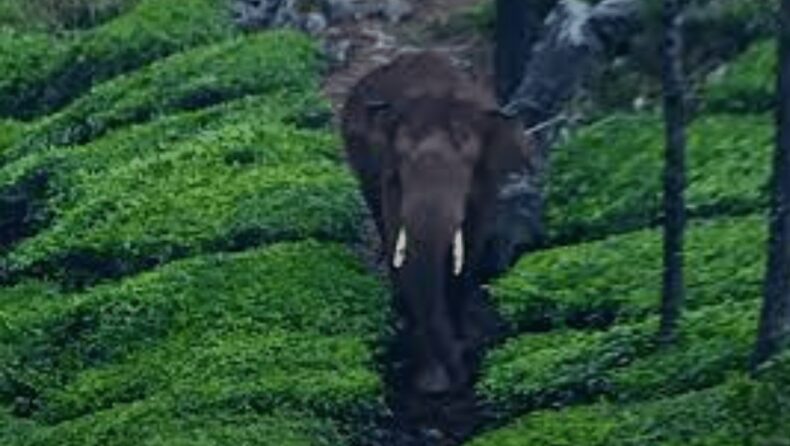The group, in Kerala, Idukki district responsible for capturing and sedating Arikomban has been present since 6:20 am on Friday. The procedure was predicted to finish in a short amount of time, but now it seems it will take until Saturday. According to sources, the government has been attempting to locate, catch, and move the wild elephant since 2018.

In preparation for capturing elephants, the forest department and the Idukki district administration carried out a practice run on Thursday. In March of this year, the Kerala High Court decided to relocate and equip Arikomban with a radio collar. The wild jumbo has been causing trouble in Chinnakanal and Shanthanpara, a mountainous area in Kerala’s Idukki district, since 2018.
At the hearing, the Kerala High Court dismissed a request to hold the elephant in confinement at the Kodanadu elephant camp and instructed forest officials to remain watchful. The court directed the forest department to locate the elephant, sedate it, and then attach a radio collar to its neck to monitor its movements instead of capturing it.
The court has requested that the district collector of Idukki personally guarantee a smooth transfer of the tusker.
The court observed that moving the elephant, which was frequently seen in human settlements, was not the ultimate solution. Instead, it emphasized the urgency of finding a permanent resolution. Additionally, the court raised concerns about why human settlements were established in elephant habitats in the first place.

The elephant’s name, Arikomban, was due to its tendency to raid rice shops. In Malayalam, “ari” means rice, and “combat” means tusker. Over the past five years, this elephant that eats rice has been causing trouble in the high-range villages of Kerala’s Idukki district. It was observed wandering in residential areas of Idukki and frequently assaulting ration shops and houses while searching for rice.
Dr. Arun Zachairah, who is experienced in tranquilizing animals, will be leading a task force to capture Arikomban. The team will consist of forest watchers, officials, police, doctors, veterinary doctors, Fire Force personnel, and Rapid Response Team members, all under the guidance of Dr. Zachariah, the chief veterinary surgeon. To accomplish this task, the forest department has decided to use four Kumki elephants – Kunju, Konni Surendran, Suryan, and Vikram, in what will be their first mission working together. The goal is to tranquilize Arikomban, the elephant in question.
The Supreme Court declined the state’s request to overturn the high court’s order to move the animal two weeks ago. The forest department’s original plan to capture and train the elephant as a “Kumki” was canceled by the high court following pressure from animal welfare advocates. As a result, the high court instructed the elephant to be relocated from Idukki to a different forest.
What are Kumki elephants?
The term kumki refers to the captive-trained Asian elephants, more appropriately, female elephants, to assist in various missions like trapping wild elephants, providing medical treatment to injured elephants, rescuing trapped elephants, etc.
They are also used to calm the herd of wild elephants sometimes and drive them away in situations of conflict. For them to be able to control wild mammoths, some element of wildness is preserved in these decoys while training.
An elephant must undergo substantial training before it can be called a kumki. Some wildlife lovers and animal activists have even criticized this kind of training by mahouts in parts of Bengal and Tamil Nadu.













